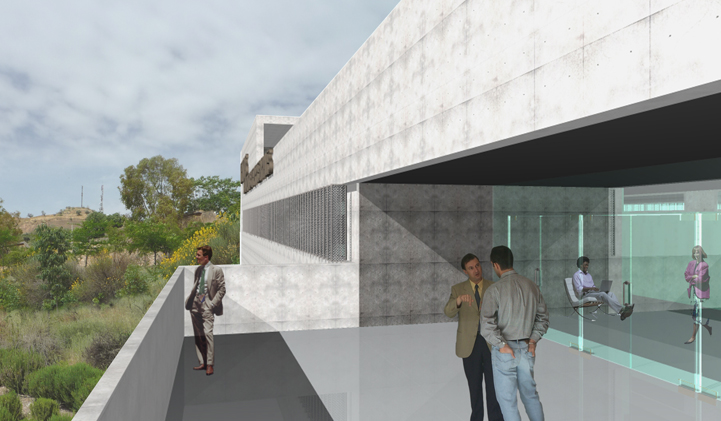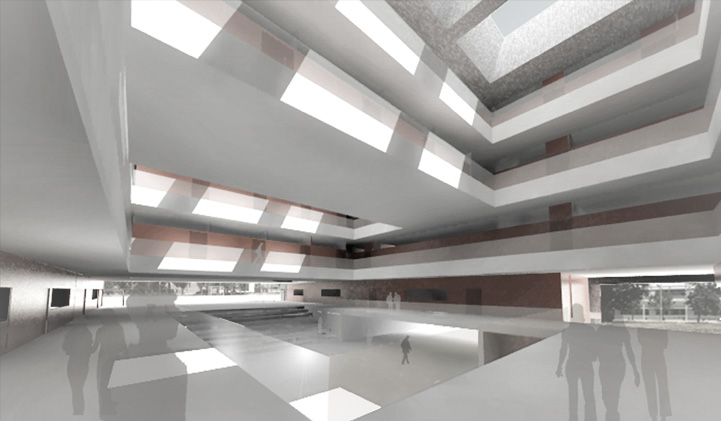
COMPETITION – ALHAMA DE MURCIA MUNICIPAL THEATRE (Murcia)
Technical Data
ARCHITECTS/AUTHORS:
MEDIO MUNDO Arquitectos. Marta Pelegrín + Fernando Pérez.
PROJECT:
Alhama de Murcia Municipal Theatre
PROGRAMME:
Theatre and auditorium
LOCATION:
Murcia
DATE OF COMPETITION:
2009
CATEGORY:
Theatre and culture
AREA:
4.417 m2
DEVELOPER:
Alhama de Murcia Town Council
COLLABORATORS:
Orizia, C. Mura, A. Babio, D. Asencio
In 2009 Alhama de Murcia Town Council launched an architectural competition to design a new theatre and auditorium in the existing La Cubana Park.
In our proposal the new theatre and auditorium is a meeting point, a place where spectators, actors and users intermingle with the park. MEDIOMUNDO arquitectos proposed a project in which the new theatre is a green heart within the La Cubana Park that encourages visitors to stroll around in its surroundings within a network of vegetation, paths and shadowy areas. The garden continues within the building and its lobbies so that it is integrated within the park. In this way the new theatre floats within the green heart of Alhama de Murcia creating a unique landscape within the town.
In the proposal the auditorium is a heart: a controlled, closed and isolated space. Its activity generates energy, attracts and radiates culture, information, people and various flows. Between the auditorium and the park are fluid spaces that expand and contract like a diaphragm. They are intermediate spaces for hosting various activities. In these spaces the park and the building come together to form a whole.
Our proposal was made up of a series of spatial and material filters in and around the main hall. These filters are created using transparent walls, shadows and covered areas that guide visitors through various spaces leading to the main hall. Our proposal allows for simultaneous use of the buildings with fully equipped spaces on the first floor that can be used without interrupting public access to the ground floor. They are spaces for meetings, events and a rehearsal room, as well as a conference room or VIP room above the main lobby. Moveable partitions allow for these spaces to be used independently of the main auditorium.
The view from the castleis characterised by a landscape of roofs into which the theatres roof has been integrated. In our proposal we understood the roof as part of the covering, another part of the same skin. For this reason we designed the roof as part of a shiny and dynamic landscape, in keeping with the tops of the trees in the gardens.
Integrated values of sustainable architecture are fundamental to our proposal. To this end we incorporated social, environmental and energetically efficient values. We also focused on the idea of cultural promotion as collective identity. In our proposal, the theatre is a space for building collective cultural identity.






































